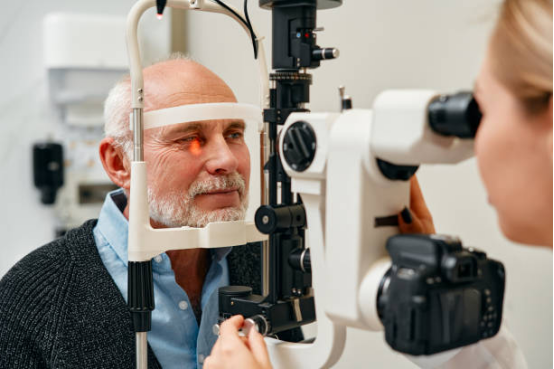Latest Developments in Treating Thyroid Eye Disease (TED)
Thyroid Eye Disease (TED), also known as Graves' orbitopathy, is an autoimmune disorder that impacts the eyes and their surrounding tissues. Although commonly linked to thyroid dysfunction, TED can occur independently of any thyroid issues.
Thyroid Eye Disease (TED), also known as Graves' orbitopathy, is an autoimmune disorder that impacts the eyes and their surrounding tissues. Although commonly linked to thyroid dysfunction, TED can occur independently of any thyroid issues.
Its severity ranges from mild symptoms to debilitating conditions that can greatly affect a person's vision and daily life. In this article, we'll explore the most recent advancements in TED treatment and how they help patients manage the disease effectively.

What is TED Eye Disease?
TED occurs when the immune system mistakenly attacks the tissues around the eyes, leading to inflammation and swelling. This results in symptoms such as bulging eyes, double vision, eye pain, and dryness. TED may also affect the muscles responsible for controlling eye movement, making it difficult to move the eyes normally. Importantly, TED is not contagious and cannot be transmitted from one person to another.
Treatment Approaches for TED
Treatment for TED is tailored to the severity of the disease. In mild cases, where symptoms are manageable, doctors may opt for a conservative approach, such as using lubricating eye drops, glasses, or prisms to correct double vision. In more severe cases, additional medical intervention is required to prevent permanent vision loss and to alleviate symptoms.
Orbital Decompression Surgery
Orbital decompression surgery is a key procedure for patients with severe TED. The goal of this surgery is to relieve swelling and reduce pressure around the eyes. It involves removing part of the bone from the eye socket to create more space for the swollen tissues. This procedure can reduce bulging eyes, improve vision, and prevent optic nerve damage caused by excessive pressure within the orbit.
Radiotherapy
Radiotherapy is a treatment that uses targeted X-rays to destroy the cells responsible for inflammation in TED. This method is typically used when other treatments have not been effective, or in cases with severe symptoms. Radiotherapy may be administered before or after surgery to minimize the risk of the disease returning and to control inflammation more effectively.
Immunosuppressive Therapy
Immunosuppressive drugs, such as corticosteroids, are often used to manage TED by decreasing the immune system's activity and reducing inflammation. These medications help to alleviate symptoms such as swelling and eye discomfort. However, they can come with side effects and require close monitoring to ensure safety and effectiveness.
Other Treatment Options
In some cases, TED patients may benefit from additional treatments like botox injections, which can help relax overactive eye muscles. Eyelid surgery may be necessary to correct eyelid retraction or improve lid closure, and tear duct surgery can be done to relieve dry eyes. These procedures are typically combined with other treatments to achieve optimal results.
Managing Life with TED Eye Disease
TED is a chronic condition, and ongoing management is crucial to maintaining quality of life. Patients are advised to make lifestyle adjustments to better manage symptoms, such as quitting smoking, regularly using lubricating eye drops, wearing sunglasses to protect the eyes from sunlight, and reducing salt intake to prevent further swelling. Regular check-ups with healthcare providers are essential to monitor the progression of the disease and adjust treatment plans as needed.
Conclusion
Thyroid Eye Disease (TED) can have a significant impact on both eye health and daily living. The condition is treatable with a variety of options, including orbital decompression surgery, radiotherapy, and immunosuppressive therapy. With new advancements in treatment, patients can effectively manage their symptoms, reduce the severity of the disease, and improve their quality of life. Maintaining a proactive approach to treatment and lifestyle management is crucial for those living with TED.